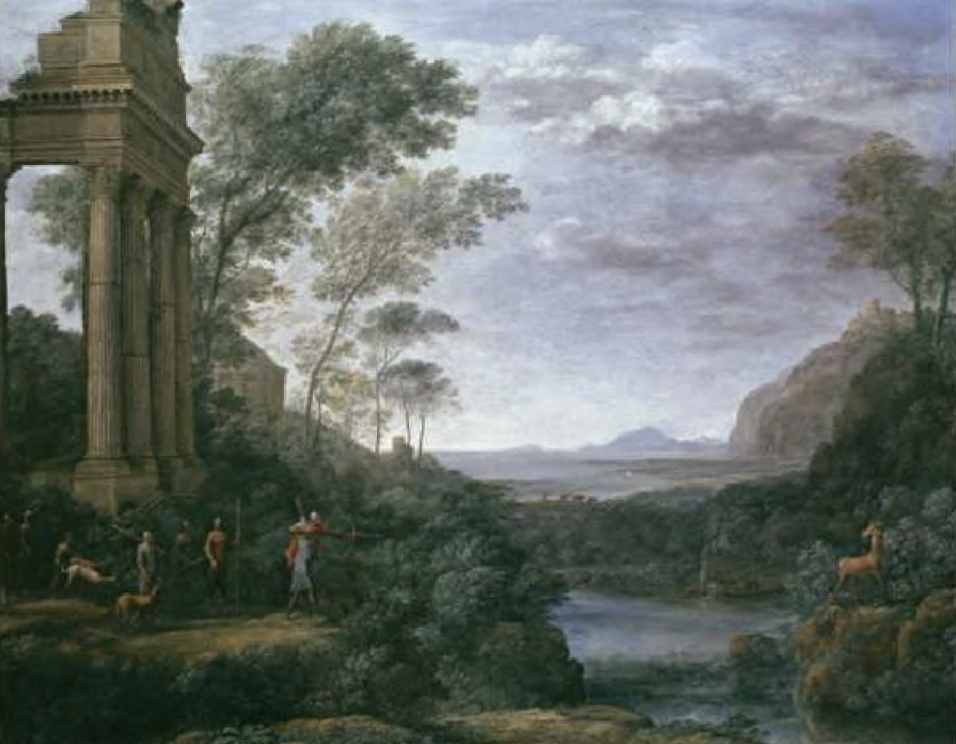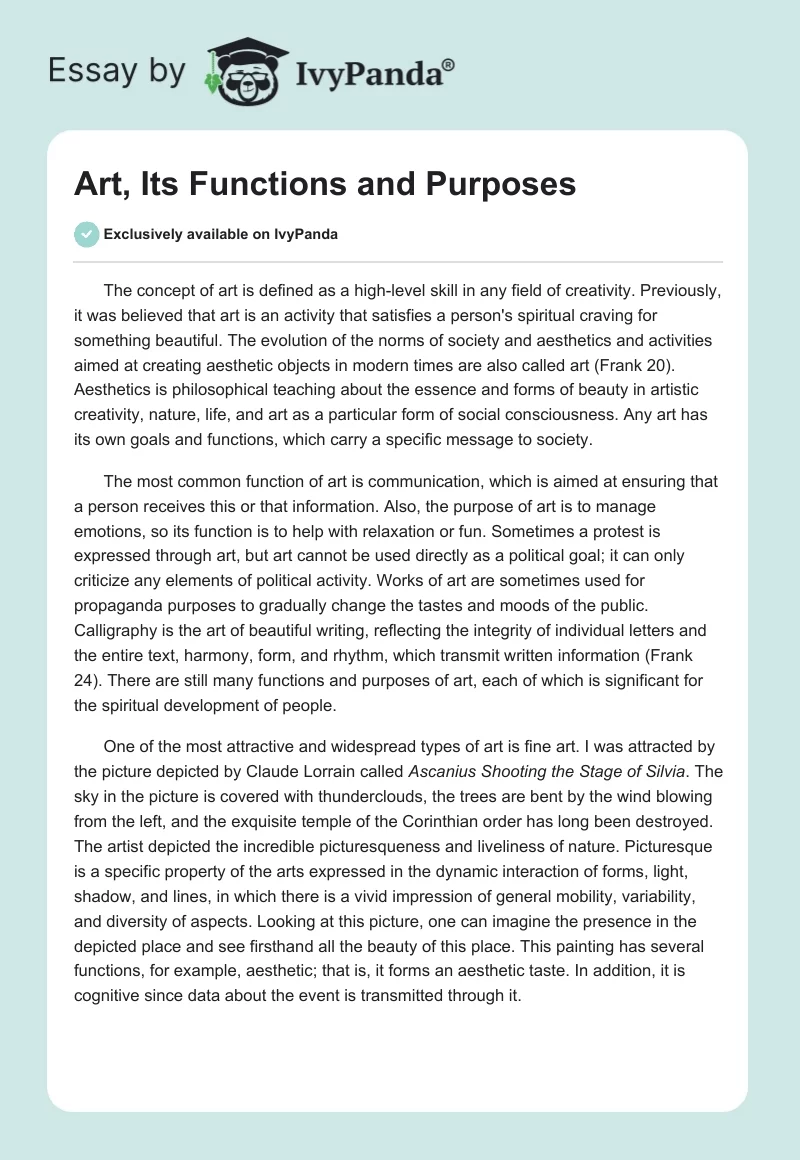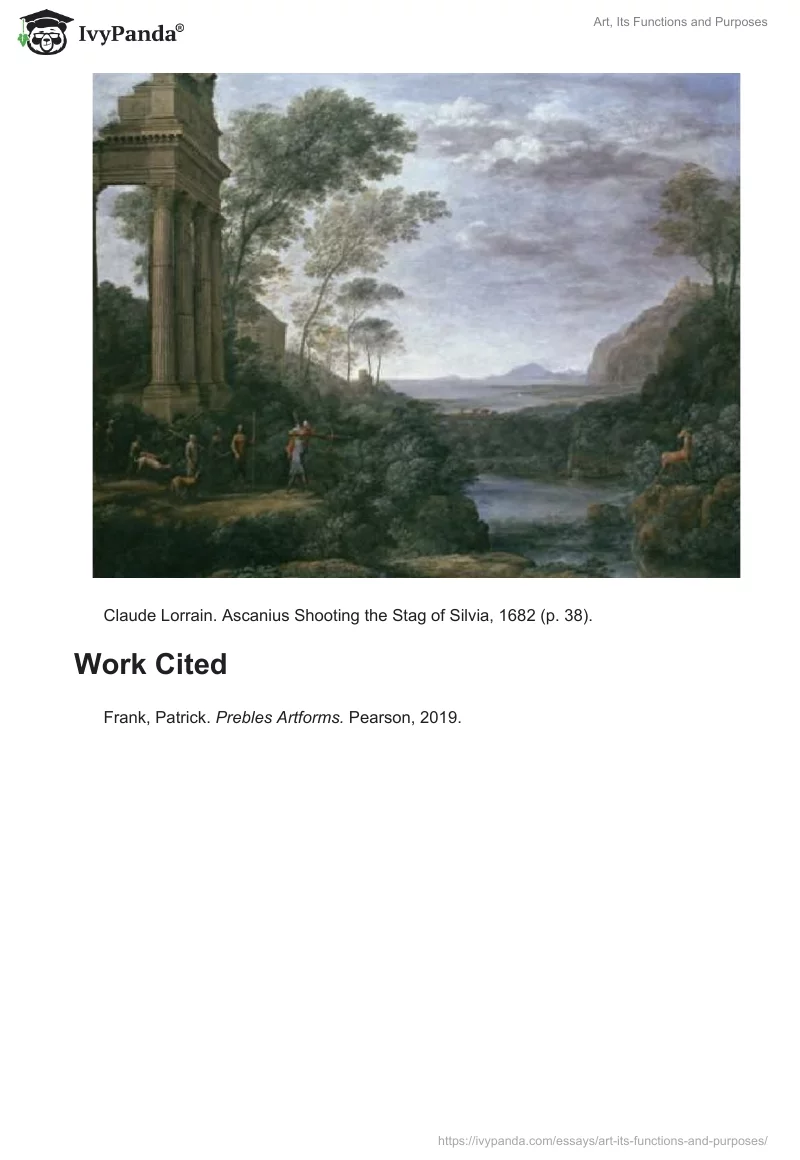The concept of art is defined as a high-level skill in any field of creativity. Previously, it was believed that art is an activity that satisfies a person’s spiritual craving for something beautiful. The evolution of the norms of society and aesthetics and activities aimed at creating aesthetic objects in modern times are also called art (Frank 20). Aesthetics is philosophical teaching about the essence and forms of beauty in artistic creativity, nature, life, and art as a particular form of social consciousness. Any art has its own goals and functions, which carry a specific message to society.
The most common function of art is communication, which is aimed at ensuring that a person receives this or that information. Also, the purpose of art is to manage emotions, so its function is to help with relaxation or fun. Sometimes a protest is expressed through art, but art cannot be used directly as a political goal; it can only criticize any elements of political activity. Works of art are sometimes used for propaganda purposes to gradually change the tastes and moods of the public. Calligraphy is the art of beautiful writing, reflecting the integrity of individual letters and the entire text, harmony, form, and rhythm, which transmit written information (Frank 24). There are still many functions and purposes of art, each of which is significant for the spiritual development of people.
One of the most attractive and widespread types of art is fine art. I was attracted by the picture depicted by Claude Lorrain called Ascanius Shooting the Stage of Silvia. The sky in the picture is covered with thunderclouds, the trees are bent by the wind blowing from the left, and the exquisite temple of the Corinthian order has long been destroyed. The artist depicted the incredible picturesqueness and liveliness of nature. Picturesque is a specific property of the arts expressed in the dynamic interaction of forms, light, shadow, and lines, in which there is a vivid impression of general mobility, variability, and diversity of aspects. Looking at this picture, one can imagine the presence in the depicted place and see firsthand all the beauty of this place. This painting has several functions, for example, aesthetic; that is, it forms an aesthetic taste. In addition, it is cognitive since data about the event is transmitted through it.

Work Cited
Frank, Patrick. Prebles Artforms. Pearson, 2019.


